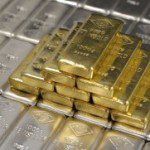Precious metals – Gold, Silver, Platinum, Palladium and there respective mining  shares – have failed to sustain any rebound despite tremendously supportive sentiment amid an extreme oversold condition… [Nevertheless,] we believe that the bottom is in and a rebound should begin very soon. The question though is, “What will the driving force be for a sustainable rebound which will evolve into a new cyclical bull market?” [Below are several options to be considered and my assessment as to which it will be – and why.]
shares – have failed to sustain any rebound despite tremendously supportive sentiment amid an extreme oversold condition… [Nevertheless,] we believe that the bottom is in and a rebound should begin very soon. The question though is, “What will the driving force be for a sustainable rebound which will evolve into a new cyclical bull market?” [Below are several options to be considered and my assessment as to which it will be – and why.]
So writes Jordan Roy-Byrne, CMT (http://thedailygold.com) in edited excerpts from his original article* entitled When Will Gold Bull Resume?.
(NOTE: This post is presented by Lorimer Wilson, editor of www.munKNEE.com and the free Intelligence Report newsletter (see sample here). The article may have been edited ([ ]), abridged (…) and/or reformatted (some sub-titles and bold/italics emphases) for the sake of clarity and brevity to ensure a fast and easy read.
Question: “What will the driving force be for a sustainable rebound which will evolve into a new cyclical bull market?”
Considerations:
1. Stock Market Strength/Weakness: Precious metals won’t sustain a rebound until the S&P 500 completes its cyclical bull market…When stocks and bonds rise, there is no reason for the majority to consider alternatives such as precious metals.
What we are seeing now is no different then what happened for a period during the 1970s bull market. The chart below shows the S&P 500 and the Barron’s Gold Mining Index (scaled 2x).
-
From 1972 through 1977 the two markets traded inversely.
-
Gold stocks surged during the 1973-1974 recession while the stock market declined. Once the economy and market recovered, gold stocks suffered.
-
Gold stocks bottomed and rebounded in 1976-1977 as the stock market went sideways.
-
As precious metals began their acceleration in early 1978, the stock market followed albeit slowly.
2. Inflation or Deflation: Will the final move in this bull market be driven by a catalyst of inflation or deflation?
- In the 1930s, the catalyst was deflation.
- In the 1970s, the catalyst for each cyclical bull was inflation.
- Within the current secular bull market, there have been three cyclical bulls which started in late 2000, the middle of 2005 and late 2008.
- The middle bull was driven by inflation,
- The two others, deflation.
Note the chart below which plots commodities (CCI) and precious metals (GPX).
- Precious metals bottomed first in 2001 while the CCI was still trending down.
- In early 2005, the CCI made a new high while precious metals continued to consolidate. The CCI continued higher and precious metals would eventually join in.
- In late 2008, precious metals bottomed first by a hair and then made new all-time highs well ahead of the CCI.
- Today we see that the CCI has not made a new low while GPX has.
3. Strength in Commodities: Will the CCI (commodities) lead precious metals during the next bull cycle? That is what happened in the 1976-1981 cyclical bull which ended the previous secular bull market. In the chart below we note that commodities bottomed at the very start of 1975 while Gold didn’t bottom until the second half of 1976. Interestingly, Gold then dramatically outperformed commodities and peaked first.
To simplify, rising inflation could be the catalyst for the next cyclical bull market and eventual secular top. While precious metals could be signaling deflation, commodities and equities are not. (The CCI hasn’t made a new low!) Money has poured into US equities and junk bonds as a way to earn a return in a low growth and low inflation environment. Government bonds have performed well but not as well as US equities and junk bonds. During deflation there is a search for safety. At present, there is a mad scramble for yield.
4. Global Monetary Policy: While the U.S. economy will likely remain stagnant, the sudden torrent of interest rate cuts in the rest of the world could stimulate global inflation in 2014 and beyond. Recently, Australia, India, Vietnam, Brazil, Russia, South Korea, Poland and Sri Lanka have cut rates. Thailand and China could be next. The ECB cut rates and hinted that QE could follow. Japan of course takes the cake.
Global monetary policy is becoming increasingly inflationary and that will ultimately be best for emerging markets and commodities. It will be bad for the S&P 500 which has attracted money as an alternative to cash and government bonds. Rising inflation would force capital out of equities, junk bonds and government bonds (all of which are at all-time highs) and ultimately into precious metals and commodities.
Answer/Conclusion
As for precious metals, we maintain that a major bottom has been reached and the next move is likely higher. It could initially come on the back of these rate cuts and increasing speculation in the equity market. The mining equities are sold out and refuse to go any lower and its only a matter of time before a relief rally begins.
(Editor’s Note: The author’s views and conclusions in the above article are unaltered and no personal comments have been included to maintain the integrity of the original post. Furthermore, the views, conclusions and any recommendations offered in this article are not to be construed as an endorsement of such by the editor.)
*http://thedailygold.com/when-will-gold-bull-resume/
Related Articles:
1. Gold & Silver: It Could Get Uglier! Here’s What the Charts Are Saying
The next chapter [in gold and silver] has yet to be written. One thing is likely to be certain, it will get uglier. The public will not be prepared for what could take a few more years to develop, and the potential for yet much lower prices for both gold and silver. Read More »
2. Gold Stocks Are a Compelling Buy – Here Are 3 Reasons Why
I believe the drivers for the yellow metal remain intact, however, so for investors who can tolerate the ups and downs, gold stocks are a compelling buy. Here are three reasons Read More »
3. What the Charts Say About the Future Price Action of Gold & Silver
The monthly silver chart does not reflect what could be viewed as ending action for the decline. If/as price rallies, it may be more of a futures selling opportunity than a sign of recovery. As the structure stands, odds favor lower price attempts. Read More »
4. Gold & Silver: Don’t Wait for the Bottom – “Average Down”. Here’s Why
You cannot control what others do, especially those in power. You can control what you do. Just keep buying, regardless of price, because if/when the price of gold and silver were to go lower, you may not be able to buy. If/when the price of gold and silver were to go higher, it may be at such an accelerated rate that any price in the past few years seem cheap. Words: 550 Read More »
5. Wait for Gold to Surpass $1,478 Before Going Back In – Here’s Why
Going forward, if gold can break $1,478, the next level of interest is the closing price of $1,501 from April 12. If you are looking to get long gold, it would probably be best to wait until the commodity can get back above at least one of these levels before making a commitment. Read More »
6. Gold: Wait for Signs of Stabilization Before Buying In – Here’s Why
We are seeing signs of a bottom…in gold…but… prudence calls for waiting for some signs of stabilization before getting long. I would rather miss the first 10-20% move than lose another 50% should I get long prematurely. [Let me show you some charts that illustrate my caution.] Words: 288; Charts: 6 Read More »
 munKNEE.com Your Key to Making Money
munKNEE.com Your Key to Making Money



I look for PM’s value to remain about the same, since investors are not going to be tricked like they were during the last plunge, then once the average people learn what has been happening the prices will rebound, leaving many to wonder why they got scared and sold instead of bought more!
I believe that these same Central Banks (along with their Partners) are adding to their own PM holdings and they will continue to do so since they will be able to best take advantage of any reductions in the perceived value of PM’s LIKE THE LATEST PLUNGE, which they help create by allowing naked shorting by their Partners who are allowed to use their paper currency as collateral for the naked shorting that is causing the very drop in the value of PM’s that owners of PM’s seek to avoid!
So in summary, the Financial FIX is in, the Central Banks are now using it for their own benefit and not the public’s the public’s (because ordinary investors are not allowed to do naked short trades) who have no control over those that control their money supply or its value.